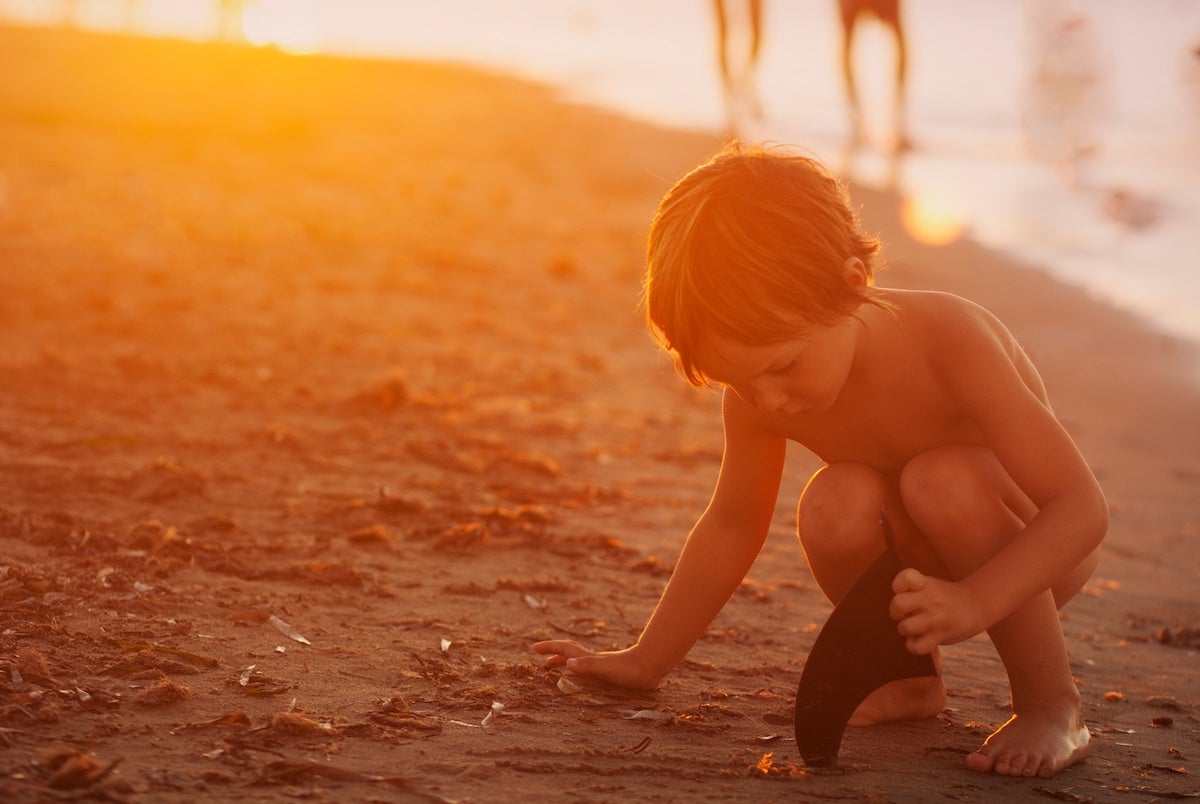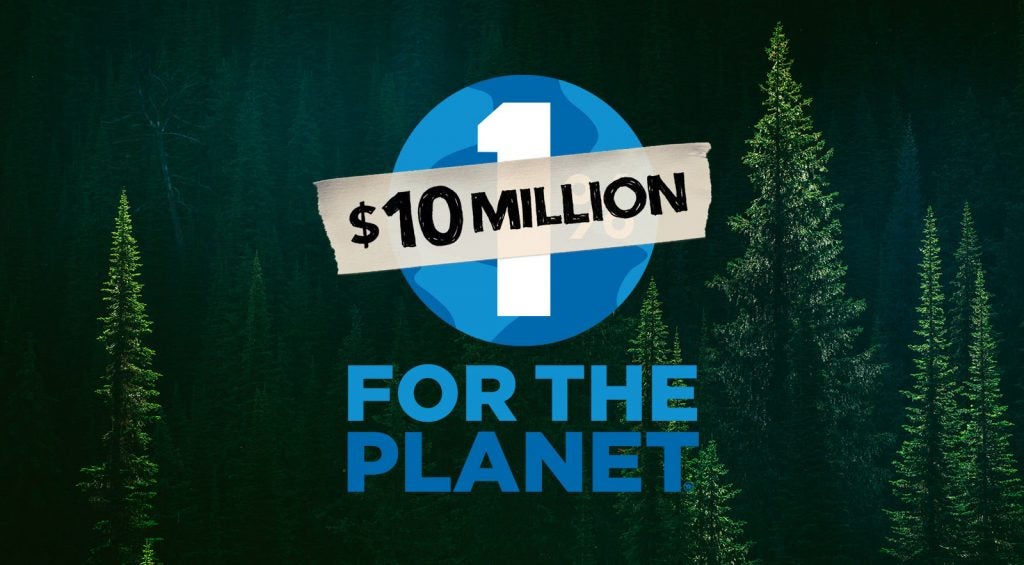There’s literally a patch of trash bigger than Texas in the Pacific. Most of it is plastic. Several companies are working to changes that. Today, we highlight the efforts of 2 companies: adidas and Phunkshun wear.
Spread across the world’s oceans are 5 major “gyres.” Each gyre is, in effect, a whirlpool where the ocean’s flotsam, jetsam, and trash collect.
The largest of these trash-collecting whirlpools is the North Pacific Gyre. This gyre is massive, covering a distance of over 20 million square miles. And in it, there is a massive collection of the world’s garbage.

Photo by NOAA.
The amount of trash in the North Pacific Gyre is so massive that it’s now officially been named The Great Pacific Garbage Patch.
It’s hard to know just how big The Great Pacific Garbage Patch is because most of its contents are small plastics floating at or just below the surface. However, estimates for the Patch’s size range from as small as the surface area of Texas all the way up to twice the size of the continental United States.
In short, this thing is massive, and it’s a massive problem.
How You Can Do Something About It
As we produce more and more waste, it is increasingly our responsibility to adopt new, waste-reusing and waste-limiting practices.
[1] These practices start with you at the individual level with everyday actions like carrying a reusable water bottle and coffee mug. Eliminating our personal waste is the first step to keeping more trash from affecting global ecosystems.
[2] It’s also important to think of the lifecycle for waste processing.
In the simplest terms, garbage does not stop at the garbage. Your trash can is just the beginning of that trash’s journey into the ground and ocean. But, to us, the garbage can is just that: where our garbage goes, and where it ends. Trash cans are in effect portals of forgetting, a place to put things and never think about them again. We know, deep down, that trash ends up in the Earth. But the white plastic bags, neatly tied up and put on the curb, are as much as we ever have to think about it on the personal level. It’s a problem with our system — one that, even once you’re aware of it, still makes it simple to forget the entire trash-to-Earth cycle.
[3] “Your trash can is a portal of forgetting” rant aside, you can also buy products that are made from recycled plastics. adidas and Phunkshun Wear are two brands leading the charge with recycled plastic fabrics.
adidas + “Parley for the Oceans” form a “Threat to Thread” Collaboration
Parley for the Oceans has created a fabric made from 95% recycled ocean plastic, and recently adidas announced they are working with Parley on a new line of products.
Their mission is both witty and fantastic:
“…to transform ocean plastic pollution into high performance sportswear, spinning the problem into a solution. The threat into a thread.”
This video combines powerful imagery with powerful words:
“We made an incredible, moldable, indestructible material. But when we dump it, it doesn’t go away. Now one truck of it ends up in our oceans every minute. It’s killing sea life. The fish eat the trash, then we eat the fish. We’re feeding ourselves our own garbage and now it’s in our bloodstreams. We’ve got to avoid plastic, we’ve got to get it out of the ocean and reuse it. Look. What if we took some trash and made a sports shoe out of it. And then we made a million more, from 11 million plastic bottles. What if that was just the start. And what if everyone did that.”

The adidas + Parley collaboration shoe, made with fabric that’s 95% recycled ocean plastic.
The adidas and Parley Threat to Thread shoe is not yet live, but you can sign up here for updates on release timing and pricing.
Phunkshun Wear’s “REPREVE” Fabric Made From Recycled Water Bottles
About a week ago we got to catch up with Jason Badgley, CEO of Phunkshun Wear. Phunkshun makes winter accessories in Colorado, USA — and they make them with fabric made from recycled plastic water bottles called REPREVE.
This fabric is used in both face masks and base layers through a three-step process: [1] plastic bottles are turned into “REPREVE Chips,” [2] REPREVE Chips are turned into REPREVE Recycled Fiber, [3] which is then turned into warm clothing to help you enjoy winter:

REPREVE fabrics — because plastic bottles can be so much more than just another contribution to The Great Pacific Garbage Patch.
As if this weren’t cool enough, Phunkshun Wear’s designs are make this a product with true mass-market appeal. In short, they turn plastic into fabric, and they make it look cool. And they don’t take themselves too seriously.
For instance, they use their REPREVE fabric — which is cool enough on its own as it keeps plastic bottles from the earth’s oceans — and then go full-on creative, printing cool or funny designs like this cat-printed standalone hood (not yet on the market).

Yours truly sporting a cat-printed plastic-bottle-fabric hood next to Jason Badgley, CEO and plastics mastermind at Phunkshun Wear.

Phunkshun’s CEO and The Dyrt’s CEO mimicking the mannequin behind them, which is ironically blocked by their mimicked poses. The pose is perhaps meant to suggest the feeling one gets while wearing a REPREVE base layer, powerful with the knowledge that your purchase kept plastic in-use and out of the ocean. ?
Also coming from Phunkshun Wear in 2017: a whole line of base layers, all of which use Phunkshun Wear’s REPREVE plastic bottle fabric.

One example of Phunkshun Wear’s men’s and women’s base layer patterns coming in 2017.
The fabric is moisture-wicking, odor repelling, UPF 50+, and has 16 color variations.
When it comes to making plastic recycling mainstream, Phunkshun could not be more front-and-center. Check out their full line of available products here, and be on the lookout for their base layers coming out in 2017.
Will We End Up With a Plastic Coffin or Plastic Savior?
Our actions now define how plastic affects ourselves and our ecosystems in the future.
We can either inadvertently craft plastic coffins for ourselves and millions of animals by continuing wasteful practices, or we can commit to re-using plastic for the benefit of all involved.
In other words, we can add to the Great Pacific Garbage Patch, or we can take from it.
Either way, it’s our choice — individually and collectively.
Brands like adidas, Parley for the Oceans, and Phunkshun Wear have made their decision.
How will you decide?
(…you can’t see it, but I just dropped a plastic microphone. Then I picked it up and sent it to Jason at Phunkshun to turn it into a dope cat-printed base layer.)
The Dyrt is the only camping app with all of the public and private campgrounds, RV parks, and free camping locations in the United States. Download now for iOS and Android.Popular Articles:
Articles on The Dyrt Magazine may contain links to affiliate websites. The Dyrt receives an affiliate commission for any purchases made by using such links at no additional cost to you the consumer.



